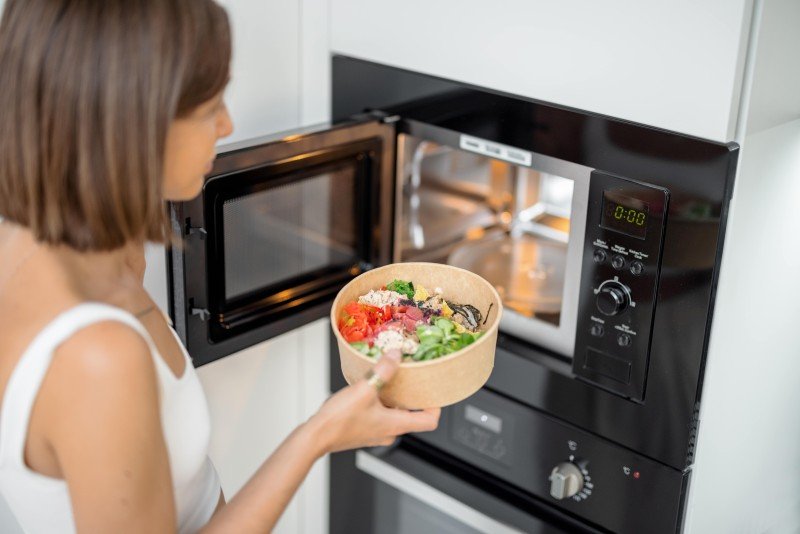Understanding Ovens and Hobs: A Comprehensive Guide
Cooking has come a long method because the days of open flames and basic cooking methods. web link , ovens and hobs are at the heart of contemporary kitchens, supplying adaptability, efficiency, and a selection of cooking options. Whether you are a beginner cook or an experienced chef, understanding the distinctions, features, and functions of these devices is important for taking full advantage of cooking capacity. This article breaks down the various kinds of ovens and hobs offered on the market, their functionalities, and how to pick the right devices for your kitchen.
What is an Oven?
An oven is an enclosed space developed for heating and cooking food, offering various methods such as baking, roasting, and broiling. Ovens come in various types, each serving unique cooking preferences and requirements.
Kinds of Ovens
Standard Ovens:
- Use gas or electrical energy for heating.
- Generally consist of a heating aspect at the top and bottom.
- Suitable for basic baking tasks.
Convection Ovens:
- Use a fan to circulate hot air, promoting even cooking.
- Appropriate for baking, roasting, and reheating.
- Lowers cooking time and boosts flavor.
Steam Ovens:
- Utilize steam to cook food while maintaining moisture and nutrients.
- Exceptional for health-conscious cooking, such as veggies and fish.
Microwave Ovens:
- Use electro-magnetic radiation to heat food rapidly.
- Best for reheating leftovers or cooking easy meals.
Wall Ovens:
- Built into the wall, conserving area in the kitchen.
- Readily available in various configurations, consisting of single or double ovens.
Key Features of Ovens
- Temperature level Control: Precision heating for various baking and preparing processes.
- Self-Cleaning Options: Some designs have self-cleaning modes that use heats to burn food residue.
- Smart Features: Wi-Fi connectivity allows remote pre-heating, tracking, and dish management via smart devices.
What is a Hob?
A hob is a cooking surface area, often referred to as a range or cooktop, where pots and pans is put for heating. Hobs are available in various materials, sizes, and heating methods, catering to diverse cooking requirements.
Kinds of Hobs
Gas Hobs:
- Utilize gas burners for direct flame cooking.
- Deal accurate temperature level control and are preferred by numerous professional chefs.
Electric Hobs:
- Use electric coils or smooth tops.
- Some designs are geared up with induction technology, offering quick heating through electro-magnetic energy.
Induction Hobs:
- Cookware must be made of magnetic materials.
- Very energy-efficient, providing rapid heat and lowering burn dangers.
Ceramic Hobs:
- Feature a glass-ceramic surface area with heating components underneath.
- Easy to clean but can be less energy-efficient than induction hobs.
Key Features of Hobs
- Burner Configuration: Varies from 2 to 6 burners, depending on model and size.
- Power Levels: Multiple settings permit higher accuracy in cooking.
- Safety Features: Options like flame failure gadgets and kid lock settings guarantee security during cooking.
Picking the Right Oven and Hob
Choosing the best oven and hob for your kitchen involves cautious consideration of numerous factors. Below is a list of questions to direct your selection process:
- What is your primary cooking design?
- Just how much kitchen space do you have?
- What is your spending plan?
- Do you choose gas or electric appliances?
- Are extra functions like clever connection essential to you?
Table Summary of Key Differences Between Ovens and Hobs
| Function | Oven | Hob |
|---|---|---|
| Functions | Baking, roasting, broiling | Boiling, frying, sautéing |
| Cooking Method | Confined heat | Direct cooking surface |
| Temperature Control | Adjustable settings | Stove settings |
| Types | Electric, gas, convection, microwave | Gas, electric, induction, ceramic |
| Cooking Capacity | Larger (can prepare multiple meals) | Smaller (concentrate on instant cooking) |
| Cleaning | Self-cleaning alternatives offered | Normally manual cleaning required |
Maintenance Tips for Ovens and Hobs
Proper care and upkeep of your cooking devices extend their life-span and performance. Here are vital maintenance suggestions:
Regular Cleaning:
- Clean the oven interior after each use to prevent residue accumulation.
- Wipe down hob surface areas after preparing to avoid discolorations.
Check Seals:
- Ensure the oven door seals are intact to maintain energy effectiveness.
- Change worn-out gaskets and seals as required.
Examine Burners and Elements:
- For gas hobs, check for obstructions in burners.
- For electric hobs, check coils and surface areas for signs of wear.
Frequently asked questions
Can I utilize any pots and pans on induction hobs?
- No, induction hobs just work with magnetic pots and pans, such as cast iron or stainless-steel.
What is the most energy-efficient cooking device?
- Induction hobs are normally the most energy-efficient option, utilizing less energy than conventional gas or electric models.
How frequently should I clean my oven?
- It's suggested to clean your oven every couple of months, or more frequently if you use it often.
Can I install an oven and hob independently?
- Yes, both appliances can be set up independently based upon kitchen style and space.
What should I consider when installing a gas hob?
- Ensure proper ventilation and adhere to local security codes. It is advisable to have an expert set up gas home appliances.
Understanding the functions, types, and maintenance of ovens and hobs can significantly improve your cooking experiences. Picking the right devices tailored to your cooking design, kitchen area, and security needs can make all the distinction in accomplishing cooking success. By being notified about your choices, you can take pleasure in a more efficient and pleasurable cooking journey, bringing delicious meals to your table with ease.

